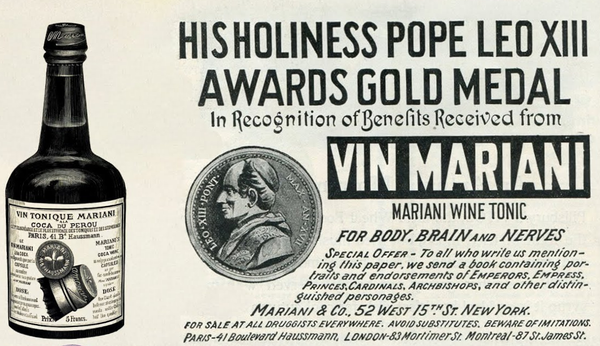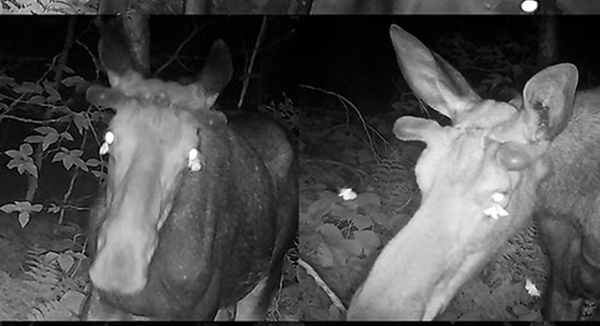Strange radio signals detected from deep under Antarctica

From Science Alert: "Nearly two decades ago, an experiment floating high above Antarctica caught a weird signal. Designed to capture the radio spurts of cosmic rays falling from above, in 2006 the Antarctic Impulsive Transient Antenna (ANITA) recorded a short pulse of radio waves from below – an event that looked like an upside-down shower of cosmic rays, not bouncing off the surface, but emanating from under the ice sheet. The balloon-borne suite of instruments recorded a similar event in 2014, and scientists have been scratching their heads ever since. No explanation quite fits, suggesting that the culprit could be a particle unknown to science. Scientists thought a neutrino may come from a supernova that then tunnels its way right through Earth and comes out the other side. However, only the 2014 detection coincided with a supernova that could be responsible – no such event was found for 2006."
Niels Bohr didn't have a beer pipeline to his house but he did get a lot of free beer

From Beerena: "The Danish physicist Niels Bohr, who won the Nobel Prize in Physics in 1922 and helped develop the first atomic bomb as part of the Manhattan Project, had a long and successful scientific career. As a reward for his hard work, the Danish brewery Carlsberg gave him a house with an installed beer pipeline, so that he could enjoy free beer for the rest of his life. The only problem with that story is that it's not entirely true. Bohr moved into the honorary Carlsberg residence in 1932, which was originally built for Jacob Christian Jacobsen, the founder of the Carlsberg brewery. The house was not given to him, but he had the right to use it for the rest of his life. After moving into the house, a representative of the brewery stopped by and asked him how many beers a day he wanted to be delivered to him. Bohr said: 12, thinking of bottles, but the brewery started delivering 12 crates of beer to him every day to him, and that arrangement lasted for a while until the misunderstanding was corrected."
How NASA's mission to Pluto was almost lost

From Nautilus: "On the Saturday afternoon of July 4, 2015, NASA’s New Horizons Pluto mission leader Alan Stern was in his office near the project Mission Control Center when his cell phone rang. New Horizons, the spacecraft mission that had been the central focus of his career for 14 years, was now just 10 days from its targeted encounter with the most distant planet ever explored. Glancing at his ringing phone, Alan was surprised to see the caller was Glen Fountain, the longtime project manager of New Horizons. He felt a chill because he knew that Glen was taking time off for the holiday. Why would Glen be calling now? Alan picked up the phone. “Glen, what’s up?” “We’ve lost contact with the spacecraft.” Alan hung up his phone and sat down at his desk for a few seconds, stunned. Unintentional loss of contact with Earth had never before happened to New Horizons over the entire nine-year flight from Earth to Pluto. How could this be happening now, just 10 days out from Pluto?"
Hi everyone! Mathew Ingram here. I am able to continue writing this newsletter in part because of your financial help and support, which you can do either through my Patreon or by upgrading your subscription to a monthly contribution. I enjoy gathering all of these links and sharing them with you, but it does take time, and your support makes it possible for me to do that. I also write a weekly newsletter of technology analysis called The Torment Nexus.
These two artists are identical twins but their art couldn't be more different

From Artsy: "Painters Laura and Rachel Lancaster are twins, but their work is anything but identical. Laura’s is energetic, with oil paint thickly applied to pick out figures in landscapes. Meanwhile, Rachel depicts moments of stillness and intimacy in soft shades. They paint in parallel, from the same studio in Newcastle, England, each with her own take on the nuances of memory in our image-dominated culture. I met Laura and Rachel in their shared studio in the leafy Ouseburn area of Newcastle, just outside of the city center, amid galleries, boutiques, bars, and restaurants. They have been based together in this Grade II-listed converted flax mill for over a decade. Rachel’s palette is piled high with only two colors in all their gradients, adorned with a cloth that I learn is used to wipe back layers of glaze to reveal the pale canvas beneath. Whereas on Laura’s side, tins of mixed paint totter in piles all around."
The term "slush fund" is sailing jargon that dates back to the 1800s

From Now I Know: "Salt pork was a staple on fishing and whaling ships of the early-to-mid 1800s. Crews aboard those ships spent a lot of a time at sea, and salt pork was a good, long-lasting protein source in an era before refrigeration. Salt pork was typically fried, and as the ship’s voyage continued onward, fat, grease, and other waste products would build up in the cooking vats. This residue became known as “slush,” likely because of its similarities to the melted snow seen back on land. But this pig-created slush wasn’t just thrown overboard as waste — it turned out to be useful; sailors used it as a lubricant and to waterproof the rigging and sails on their ships. So they kept it around, and when their whaling or fishing expeditions ended, they typically still had a large amount of slush left over. And it turned out, there was a market for the stuff. Because the slush was a byproduct of the efforts to feed the crew, ship owners rarely, if ever, cared about the value of the slush itself — so when the sailors sold off the slush, they kept the money for themselves and their crewmates as a "slush fund."
A kingfisher's remarkable head stabilization while hunting
A kingfisher's remarkable head stabilization while hunting.pic.twitter.com/qC3Z0JdV1p
— Wonder of Science (@wonderofscience) June 16, 2025
Acknowledgements: I find a lot of these links myself, but I also get some from other newsletters that I rely on as "serendipity engines," such as The Morning News from Rosecrans Baldwin and Andrew Womack, Jodi Ettenberg's Curious About Everything, Dan Lewis's Now I Know, Robert Cottrell and Caroline Crampton's The Browser, Clive Thompson's Linkfest, Noah Brier and Colin Nagy's Why Is This Interesting, Maria Popova's The Marginalian, Sheehan Quirke AKA The Cultural Tutor, the Smithsonian magazine, and JSTOR Daily. If you come across something interesting that you think should be included here, please feel free to email me at mathew @ mathewingram dot com



